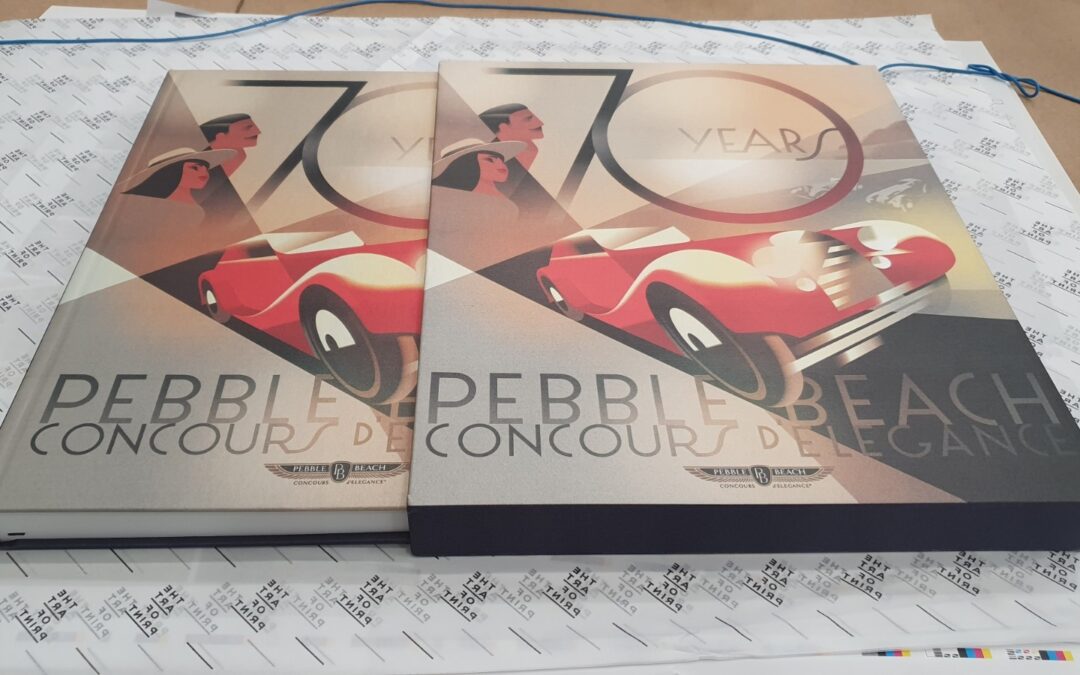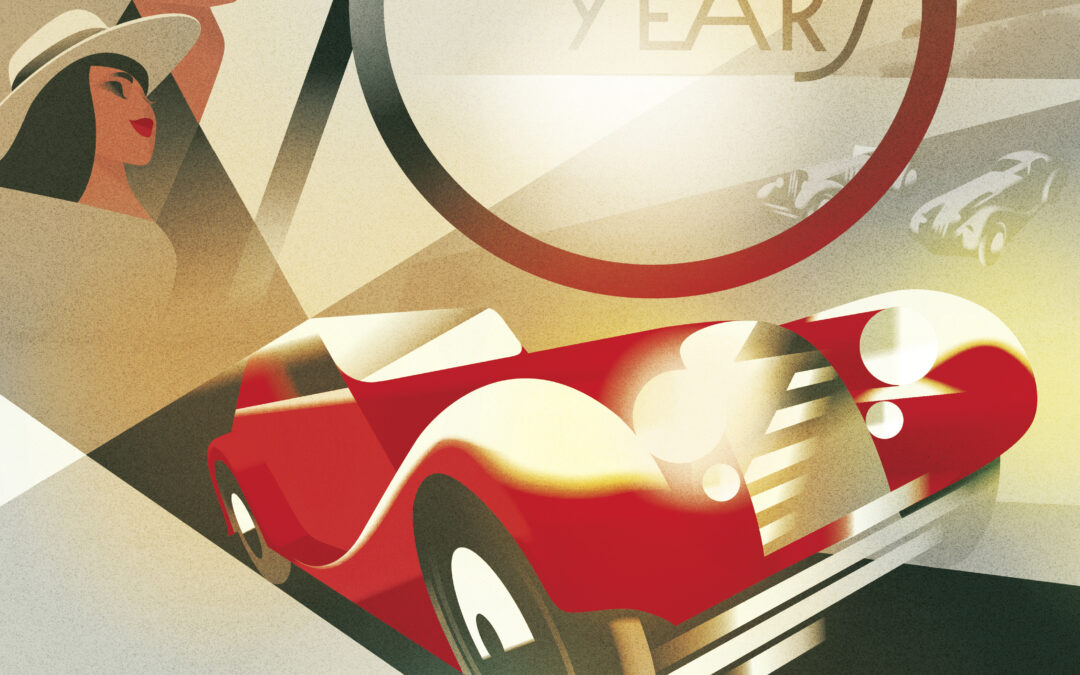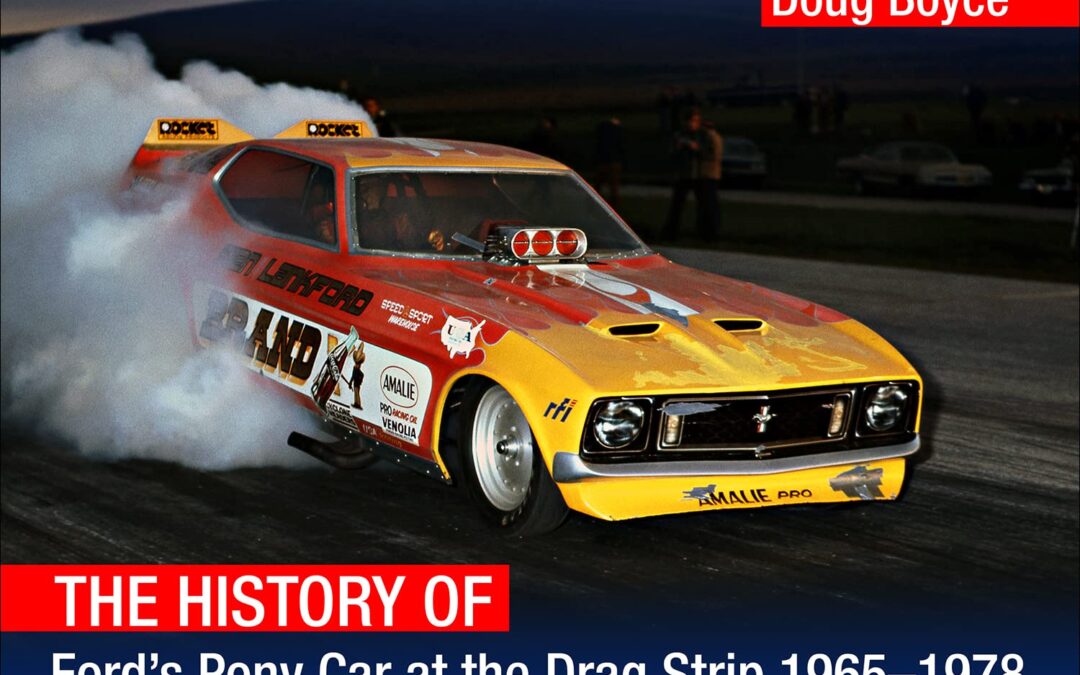
Blast down the quarter mile in the first two generations of Ford’s legendary pony car across all drag racing classes in Quarter-Mile Mustangs!
Since first becoming a mass-market success in mid-1964, the Ford Mustang has made millions of passes down the quarter mile on sanctioned drag strips. With styling flared toward the youth, aftermarket parts manufacturers saw an enormous opportunity to produce go-fast components to aid in propelling Ford’s pony car down the 1320. The success of these cars was immediate.
In the hands of successful and seasoned pros, such as Gas Ronda, Bill Lawton, and Dick Brannan, Ford unleashed the devastatingly potent 1965 A/FX Mustang fastback, which was built by Blue Oval stalwarts Holman & Moody with the 427 SOHC (Cammer) engine that unleashed havoc on mother Mopar.
From those very first factory drag cars through the fabled 1968-1/2 Cobra Jets, drag racing historian Doug Boyce highlights the many successes of pioneers, such as “Dyno” Don Nicholson, Les Ritchey, Phil Bonner, Hubert Platt, and Al Joniec. However, it’s not just all doorslammers. As A/FX transitioned into Funny Car, a whole new chapter in Mustang drag racing was written with Mickey Thompson taking the reins and steering Mustangs to success throughout the late 1960s and early 1970s.
The muscle car-era Mustangs joined the Mustang II and soldiered on the best they could as ever-changing rules hampered Ford’s new pony body, with drivers Bob Glidden and Nicholson trying to squeeze every bit of performance out of the diminutive pony.
Quarter-Mile Mustangs: The History of Ford’s Pony Car at the Drag Strip 1964-1/2-1978 brings forth the most in-depth coverage of these cars at the drag strip. Don’t get caught sleeping at the light!

Because the basics are largely unchanging, the book therefore is applicable to large airplanes and small, old airplanes and new, and is of interest not only to the learner but also to the accomplished pilot and to the instructor himself. When Stick and Rudder first came out, some of its contents were considered highly controversial. In recent years its formulations have become widely accepted. Pilots and flight instructors have found that the book works. Today several excellent manuals offer the pilot accurate and valuable technical information. But Stick and Rudder remains the leading think-book on the art of flying.
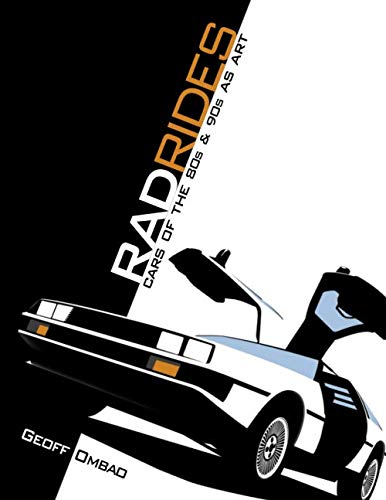
The cars of the 80’s, and 90’s are often remembered as slow, unsophisticated, or boring. But during this time many unique, beautiful, and (sometimes) awesome cars emerged as engineers, designers, and industrialists worked to bring their dreams to reality. Cars such as the iconic Delorean, the flamboyant Ferrari Testa Rossa, the game-changing Acura NSX, and more are represented in this book as bold works of art. Additionally, many work-in-progress images offer glimpses into the creative process. The illustrations in this book were created digitally using Adobe Sketch, Illustrator, and Photoshop.
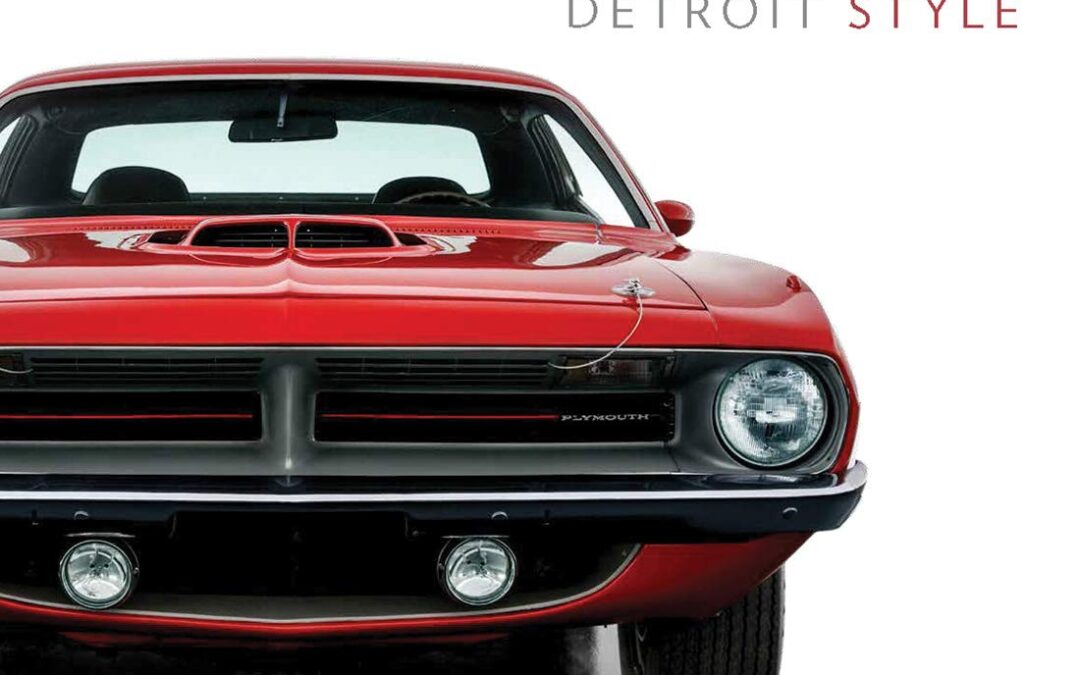
A dynamically illustrated exploration of 70 years of automotive design in the Motor City
Detroit, nicknamed Motor City, has always been a leader in car design. As the city became the center of the American automobile industry in the early 20th century, its studios became incubators for new ideas and new styles. This volume highlights the artistry and influence of Detroit designers working in the industry between 1950 and the present day, giving readers a sumptuously illustrated opportunity to discover the ingenuity of influential (and surprisingly little-known) figures in postwar American car design. Detroit Style showcases 12 coupes and sedans, representing both experimental cars created solely for display and iconic production models for the mass market. Dozens of design drawings and images of studio interiors—along with paintings and sculptures—highlight the creative process and dialogue between the American art world and car culture. These materials in addition to interviews with influential figures in car design today bring new insights and spark curiosity about the formative role Detroit designers have played in shaping the automotive world around us, and the ways their work has responded to changing tastes, culture, and technology.
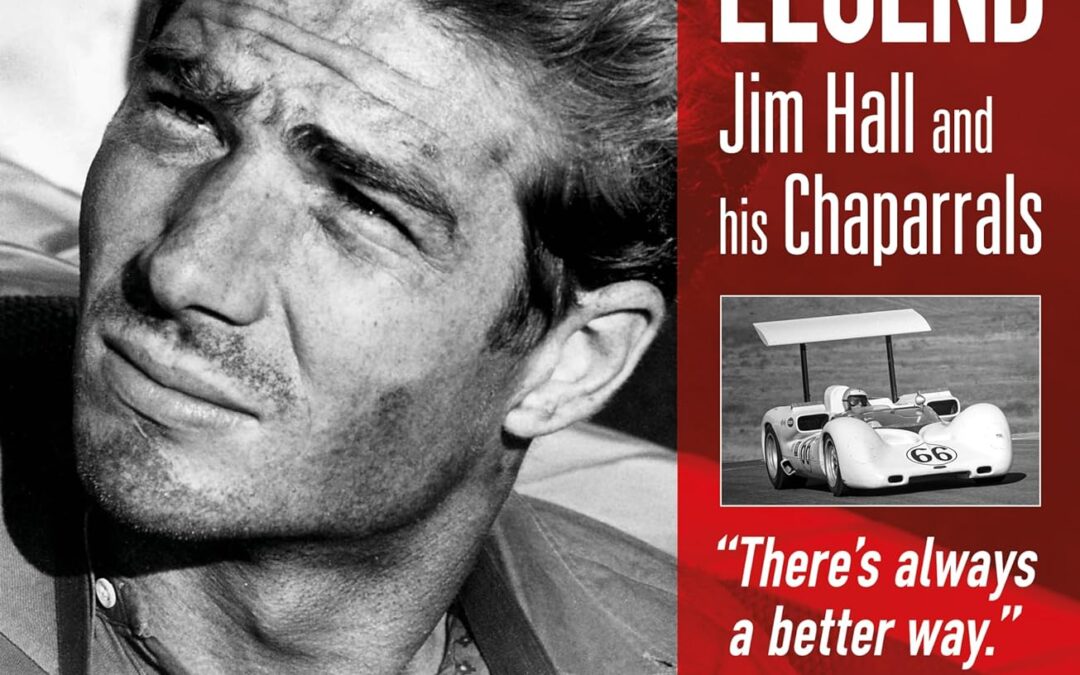

Ride along with author Tom Cotter and photographer Michael Alan Ross as they pilot their Ford Bronco/Airstream Basecamp combination 8,881 miles along the lower 48’s back roads and byways.
Tom Cotter has spent decades ferreting out lost “barn find” collector cars. The process has made him an ardent road tripper, logging thousands of miles every year on America’s back roads. Previous journeys have traced Route 66 in his 1939 Ford Woody wagon and followed the Lincoln highway coast to coast behind the wheel of a 1926 Model T.
Cotter’s journeys led him to wonder: What could be the most epic American road trip? The answer: Key West, Florida, to Deadhorse, Alaska, its thousands of miles recounted in America’s Greatest Road Trip. Cotter and Ross drove across the country, through British Columbia and the Yukon, and finally through Alaska to the literal end of the road. Ross documented their road time in thousands of photographs.
Along the way, the pair met fellow road trippers, adventurers, small-town Americans, world travelers, and rolled through an ever-changing geography from the Gulf of Mexico to the Mississippi Delta to the Great Plains and Mountain states through the Northwest Passage and finally several hundred miles of Alaska’s challenging ALCAN Highway.
Cotter’s observations of Two-Lane America are complemented by Ross’s beautiful photography capturing both the sweep and the detail of life off the beaten path.
Join them on their once-in-a-lifetime journey—you’ll be glad you came along for the ride.
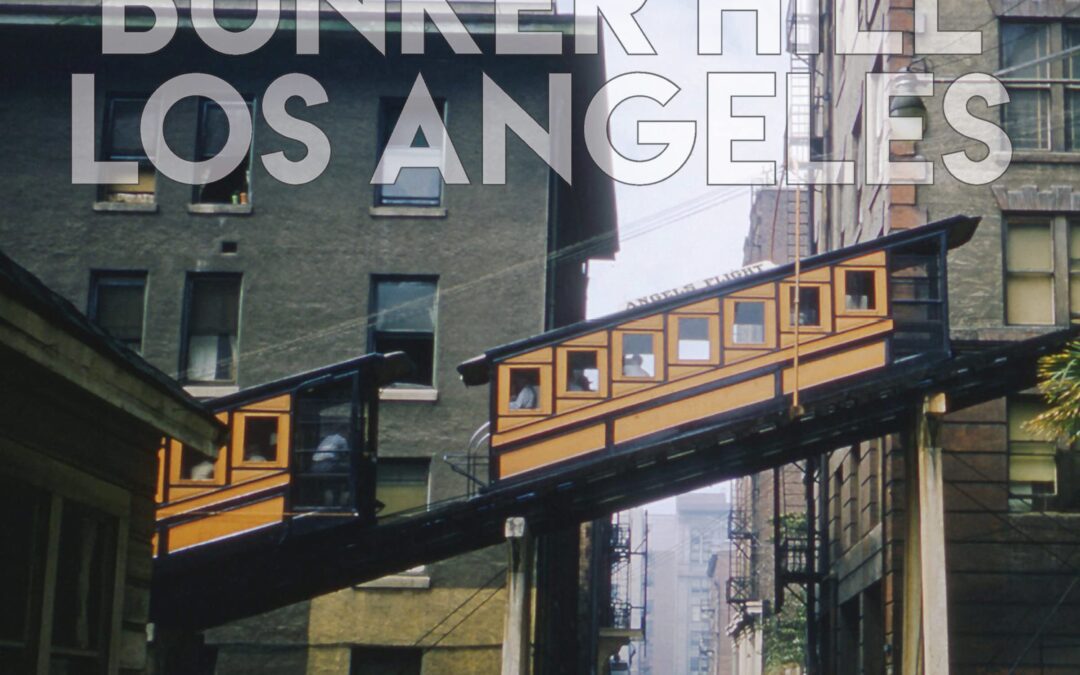
Bunker Hill is the highest point of downtown Los Angeles, both literally and figuratively. Its circle of life has created a continuous saga of change, each chapter rich with captivating characters, structures, and culture. In Bunker Hill Los Angeles: Essence of Sunshine and Noir, historian Nathan Marsak tells the story of the Hill, from the district’s inception in the mid-19th century to its present day. Once home to wealthy Angelenos living in LA’s “first suburb,” then the epicenter of the city’s shifting demographics and the shadow and vice of an urban underbelly, Bunker Hill survived its attempted erasure and burgeoned as a hub of arts, politics, business, and tourism.
As compelling as the story of the destruction of Bunker Hill is―with all the good intentions and bad results endemic to city politics―it was its people who made the Hill at once desirable and undesirable. Marsak commemorates the poets and writers, artists and activists, little guys and big guys, and of course, the many architects who built and rebuilt the community on the Hill―time after historic time.
Any fan of American architecture will treasure Marsak’s analysis of buildings that have crowned the Hill: the exuberance of Victorian shingle and spindlework, from Mission to Modern, from Queen Anne to Frank Gehry, Bunker Hill has been home to it all, the ever-changing built environment.
With more than 250 photographs―many in color―as well as maps and vintage ephemera to tell his dramatic visual story, Marsak lures us into Bunker Hill Los Angeles and shares its lost world, then guides us to its new one.
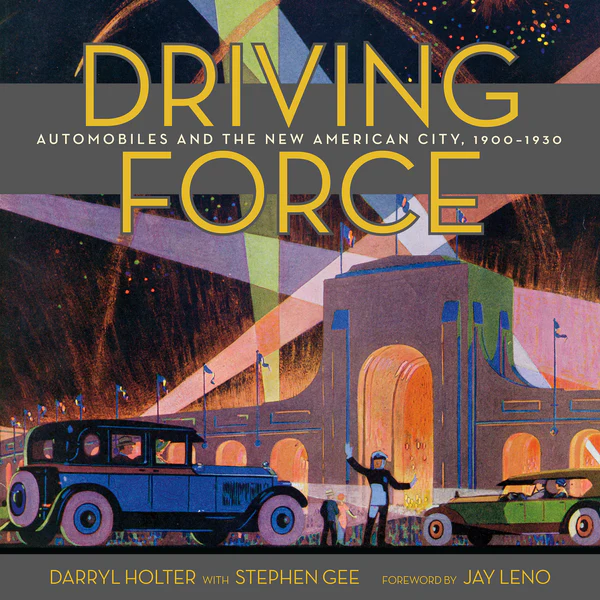
Driving Force: Automobiles and the New American City 1900-1930 (Angel City Press) explores how Los
Angeles’s enigmatic car culture propelled the explosive growth of America’s passion for cars. And with thoroughly researched text and page-after-page of vintage images, it shows how roadblocks that limited the sales of automobiles in the rest of the country, were eliminated in a new-thinking city in the earliest days of the car industry.
At the dawn of the twentieth century, as Los Angeles transformed from a rugged outpost to a booming metropolis, so too did the fledgling automobile simultaneously come of age. Ignited by an unlikely and visionary mix of entrepreneurs who ventured into unknown territory, early adopters broadened the market and convinced the public that cars were no longer a luxury—they were the ultimate modern necessity. From these early enthusiasts, men and women in various business recognized that the automobile would change society and wanted a piece of that action. The city’s auto business emerged initially among bicycle shop owners, carriage retailers, and automobile aficionados who started selling—and repairing!—cars. Their workshops thrived, expanded, and eventually became dealerships, the key component to the auto boom.
In this first major history of dealers at work—and one of the first books to chronicle the early history of cars in Los Angeles—authors Darryl Holter and Stephen Gee share the untold story of pioneering automobile dealers who seized the chance to join a start-up industry that reinvented an American city. Some became wealthy and powerful, others failed. But the lure of the automobile never wavered.
The L.A. dealers helped change the way cars were sold. They championed selling cars on credit while accepting“used cars” that buyers “traded in” so they could buy a new one. They introduced the West Coast to the concept of dealerships with service bays for on-site car repairs; persuaded manufacturers to design cars to their specifications and created custom vehicles and innovations that were copied around the country.
With more than 150 spectacular vintage images—many never before published—Driving Force brings to life the people who made the automobile an icon of the modern American city. In its pages, readers will discover how the story of the automobile is interwoven with Southern California’s unique topography and sun-drenched climate; a new era of women’s rights, and a growing female influence on automobile design; the creation of the Los Angeles Auto Show and the remarkable 1929 fire that threatened to destroy it; and how car dealers launched renowned L.A. radio and television stations, including KNX, KFI, and KCBS-KCAL.
As car collector extraordinaire Jay Leno explains in his Foreword to Driving Force, “Darryl Holter shows that auto retailers connected manufacturers to buyers, changing America and shaping the history, economy, and culture of Los Angeles.”

As World War II drew to a close, America’s premier fire apparatus builder–the American-LaFrance Foamite Corp. of Elmira, N.Y.–bet the company’s future on its radical new cab-ahead-of-engine 700 Series fire engines. In a spectacular gamble to capture the superheated postwar market, all of the company’s existing products were discontinued and its customers were essentially told to “take it or leave it.” This bold gamble paid off and 700 Series rigs soon filled firehouses across the nation, sweeping aside all competitors and ultimately defining the breakthrough 700 as “America’s Fire Engine.” This is the first comprehensive history of the game-changing 700. Individual chapters detail not only each of the eight major vehicle types but also the origins, design controversies, manufacturing, and marketing of the 700 and short-lived transitional 800 Series. The book includes a meticulously researched registry of every 700/800 series apparatus delivered, supported by many interpretive tables detailing production, specifications and major fire department fleets.
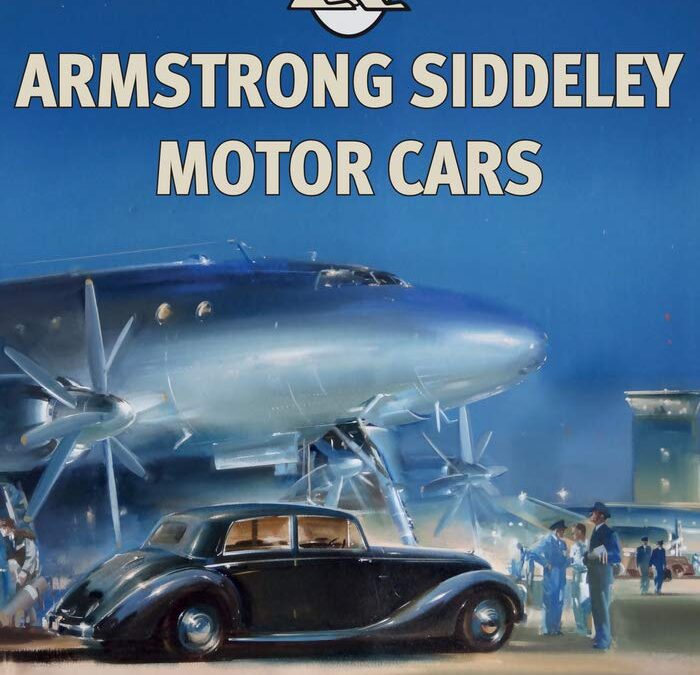
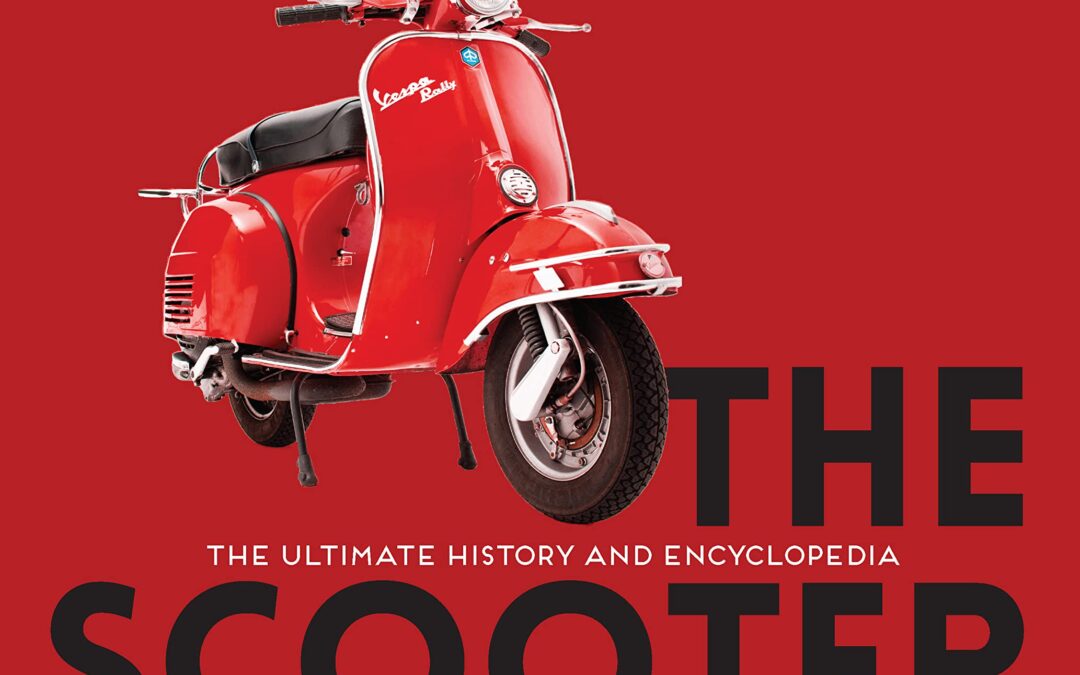
The Scooter Bible is an entertaining, colorful, and authoritative history of the little motorbikes that could.
Beginning with the first motor scooter in 1902, Eric Dregni is your guide to everything from the postwar American scooter boom to the golden age of Italian and European scooters, the rise of Mod scooter culture in England . . . right up to modern electric scooters.
Today, nostalgia for vintage Vespas, Piaggios, Cushmans, Lambrettas, and other top brands drive a new thirst for retro-inspired scooters in showrooms around the world. This revised and updated edition of The Scooter Bible brings the story up to date with the drive for zero emissions via electric vehicles. Throughout, author Eric Dregni offers you a wealth of imagery: historic black-and-white photos, evocative period advertisements, manufacturer photos, and more—over 500 images! Along the way, he also shows you scooter evolution, changing technologies, and scooter appearances in popular culture.
And as the most comprehensive scooter book ever, The Scooter Bible also includes the world’s most exhaustive encyclopedia of scooter brands, from Puddlejumper to Piaggio, Ducati to Doodlebug, and Zündapp Bella to Genuine Stella. The Scooter Bible is all you need before kick-starting your scooter engine to life and praying for ever more speed.
Indeed, scooters are mechanical marvels on two wheels. Streamlined spuds. Mutant oddballs of Jet Age styling gone berserk. Innovative inventions shoehorned like sardines into miniaturized monocoque bodies. Engineering and styling enigmas (the stranger the better). They are the weird and the wonderful. And they are all here in The Scooter Bible
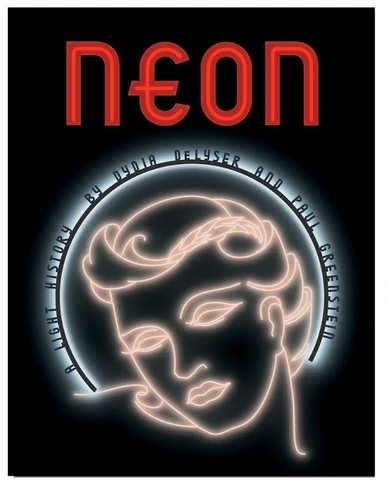
SIGNED
Since the late nineteenth century neon signs have inspired devotion and derision, drawing people to them and transforming the American landscape in the process. In Neon: A Light History Dydia DeLyser and Paul Greenstein unite the approaches of scholar and signmaker in the first book to detail neon’s rich history and geography from the inside. Lavishly illustrated and invitingly designed, this short book’s compellingly written expert analysis dispels long-held myths and misunderstandings about the inventors and technologies, the art and commerce, and the cities and communities that have made neon signs such iconic parts of the American landscape.
Revealing neon signs as active agents in sweeping cultural, economic, and political changes nationwide, DeLyser and Greenstein introduce readers to inventors and “tube benders,” business owners and customers, politicians and passersby, sign detractors and sign afficionados, architects and restoration specialists—a compelling cast of characters, many of whom, they show, continue to keep neon vibrant today. Taking readers inside the signs themselves, the authors show how each sign, whether historic or contemporary, is made by skilled hands—today just as they were over one hundred years ago.
Drawing from over a decade of in-depth archival and ethnographic research as well as more than four decades of experience in the sign industry, DeLyser and Greenstein use Los Angeles—not New York or Las Vegas—as focal point, showing how neon signs have catalyzed urban change, and how they continue to hold appeal for our changing communities—developing with the automobile and car-and-consumer culture in the twentieth century, expanding from cities to towns, and along highways to remote roadside outposts. From the earliest luminous tubing in the 1890s to the artistic creations of today, from community-funded restorations of historic signs to ordinary-seeming business signs that have become community icons, DeLyser and Greenstein show how, just as neon signs lit our past, they can now light our shared future.
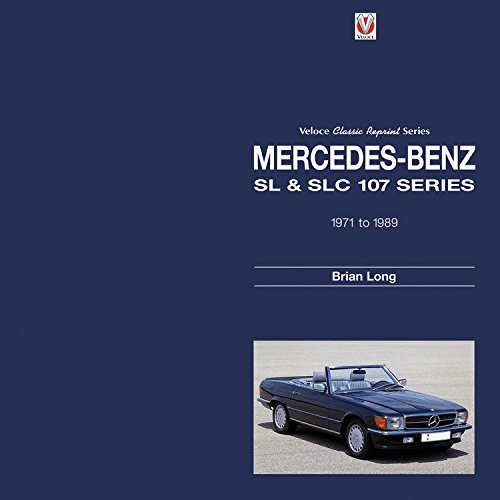
It’s hard to believe, but the 107-series Mercedes-Benz SL was launched almost 50 years ago. However, its timeless styling has kept it fresh and attractive in the eyes of a new generation of enthusiasts, as well as those going back to the car having owned one when they were still in dealerships. The availability of the practical SLC (an extended, four-seater fixed-head coupé version), simply adds to the desirability of these classic German machines. A combination of superb original design, peerless engineering and build quality has ensured that many of these cars can still be seen in regular use today.
Covering the SL and SLC’s ever-changing specification, race and rally record – and its presence in many of the world’s major markets – is a huge task, but it’s all presented here in definitive detail, along with stunning contemporary photography.
Reissued as part of Veloce’s Classic Reprint series, this volume will readily grace any reference library shelf or connoisseur’s coffee table.
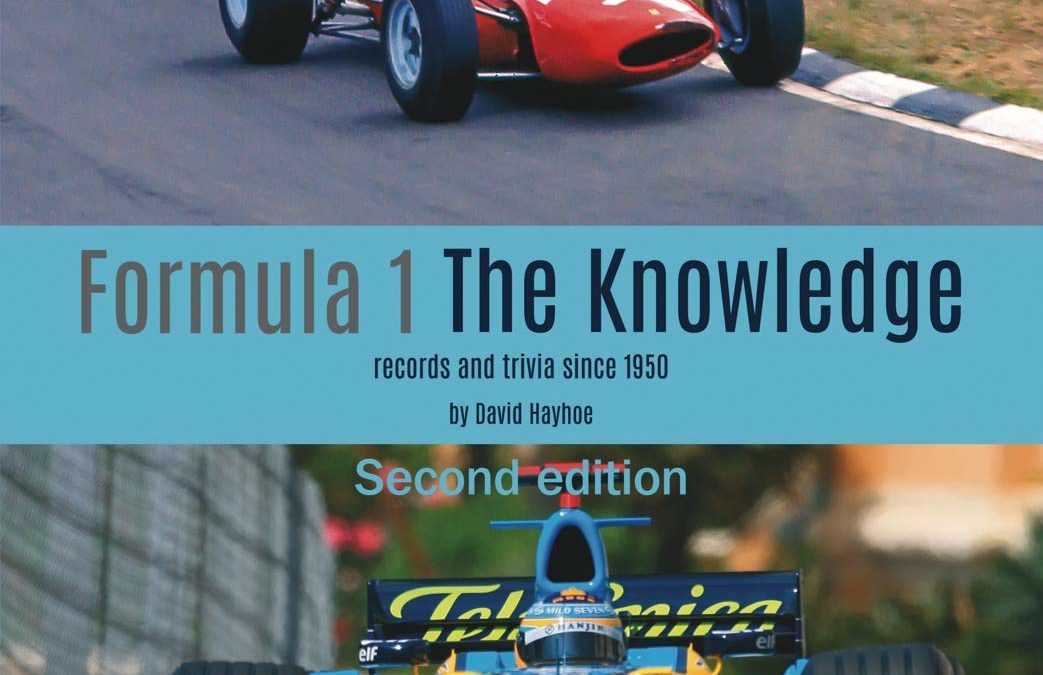
The first edition of Formula 1 – The Knowledge was groundbreaking: an entire book dedicated to F1 records and trivia, which proved hugely popular with F1 enthusiasts and fans of racing statistics. This new second edition is fully updated, with up-to-date stats, and an extended narrative including many amusing, and some serious, stories from the history of F1. There are performance records of every driver, every car constructor, and every engine make to have taken part, a detailed insight into the variety of qualifying procedures throughout the years, a summary of regulation changes since 1950 and a quick reference guide to every Grand Prix result. Performances are analysed by nationality, youngest/oldest, fastest/slowest, consecutive wins, poles, most wins at different circuits, and lots more. It’s not just focused on drivers and cars, but circuits, engines and tires too. A comprehensive photographic section depicts the changing scene of Formula 1 since its inception in 1950. This book will be an invaluable reference that will both entertain and provide definitive data at your fingertips.

Ford FE engines, which were manufactured from the late 1950s all the way through the mid-1970s, were designated as the large-displacement engines in the Ford lineup. FE means Ford Edsel, and reflects an era when Ford sought to promote the Edsel name. The design of these engines was implemented to increase displacement over its predecessor, the Y-Block engines of the previous decade. Early models were fairly modest in displacement, as were most big-blocks of the era, but they grew quickly to fill the needs of rapidly changing chassis requirements and consumer demand for larger vehicles. As it grew, the FE engine performed admirably as a heavy passenger car and light truck engine. It also became quite accomplished in performance circles, winning the 24 Hours of Le Mans, as well as powering Ford’s muscle car and drag racing programs in the mid- to late 1960s.
In Ford FE Engines: How to Rebuild, you will learn everything you need to know to rebuild one of these legendary engines. CarTech’s unique Workbench series format takes you step-by-step through the entire rebuilding process. Covered are engine identification and selection, disassembly, cleaning, parts analysis and assessment, machine shop processes, replacement parts selection, re-assembly and start-up/break-in techniques. Along the way you find helpful tips on performance upgrades, trouble spots to look for, special tools required, and professional builder’s tips.
FE master, owner of Survival Motorsports, and veteran author Barry Rabotnick shares all of his tricks and secrets on building a durable and reliable FE engine. Whether you are simply rebuilding an old truck for reliable service use, restoring a 100-point show car, or building the foundation for a high-performance street and strip machine, this book will be an irreplaceable resource for all your future FE engine projects.
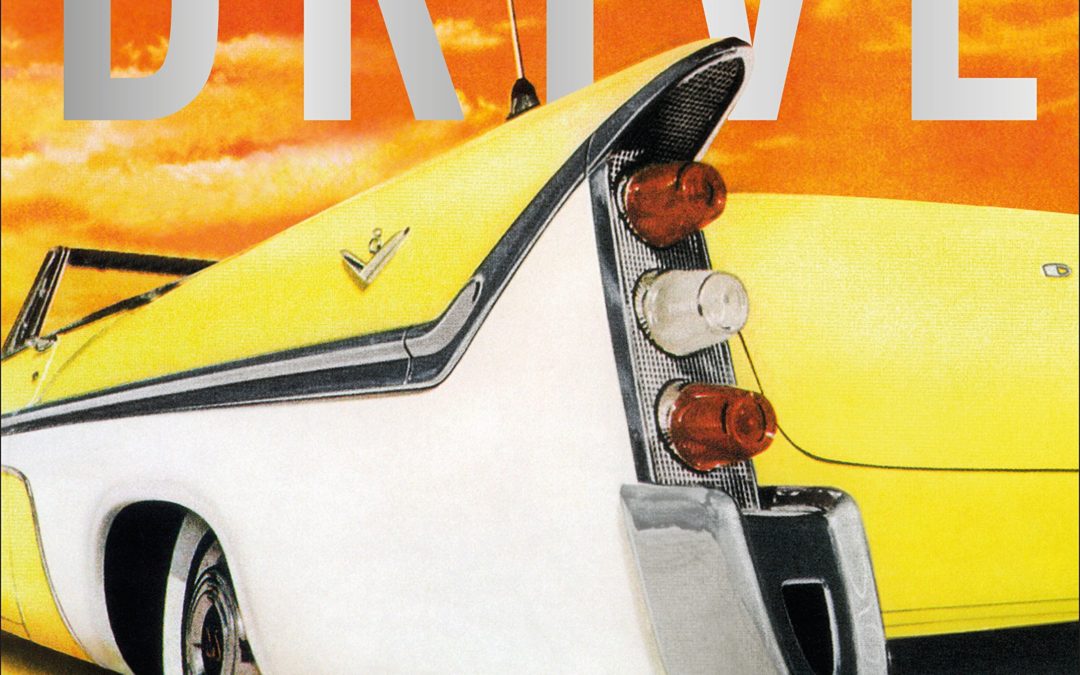
Charting the 130-years from the arrival of horseless carriages to the advent of driverless vehicles, celebrate the automobile and the romance of the open road.
Beginning with the development of the first vehicles powered by an internal combustion engine, Drive explores the early glamour of driving, motor sport, and car design, and looks at how the automobile has shaped the modern world.
Revealing the advances in technology and design that have made cars faster, safer, and better to drive, and transformed them from a means of transportation into objects of status, excitement, and desire, Drive tracks trends in auto manufacturing and the public’s changing tastes in cars: whether it’s Golden Era sports cars such as the MG, Alfa Romeo, Jaguar, and Chevrolet, muscle cars like the Mustang, hot rods, custom cars, the hippie-standard VW, or modern-day hybrid cars. Trivia and fascinating facts covering the growth of car racing, the development of traffic lights, the boom in automobile advertising, the first car washes, and the craft of artisan-made cars complete the subject, making it a must-have for car enthusiasts.
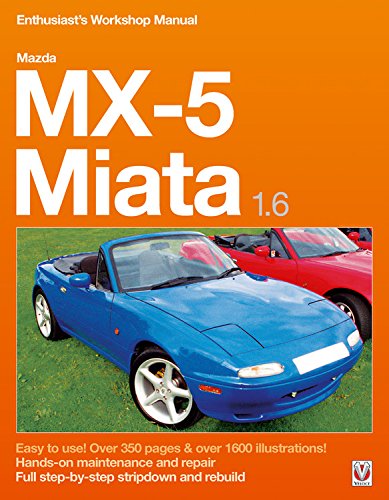
With open-topped styling and performance evocative of the classic sportscars of the 1960s, the Mazda MX-5/Eunos had to be a huge international success – and that’s exactly what it’s become. Now a familiar sight on the streets and boulevards of the world, the MX-5 is owned by real enthusiasts, the kind of people who will want to have hands-on involvement with the maintenance and repair of their prized possession. For those enthusiasts, here is what we believe to be the best, easiest to use workshop manual in the world.
Author Rod Grainger set out to create a new kind of owner’s workshop manual – friendly, easy to understand, easy to use, and yet more detailed than any other manual currently available: two years later, the Mazda MX-5 Miata 1.6 Enthusiast’s Workshop Manual was the result. Rod, and fellow enthusiasts Pete and Judith, stripped down an MX-5 in an ordinary domestic garage using ordinary tools and, in the process, took over 1,500 step-by-step photographs. The result of all this work is a superbly detailed text which passes on to the reader every detail of important jobs, including how problems can be overcome without resorting to special tools. This manual even tells the reader the size of nuts and bolts so they can start work with the right tools and all clearances and torque values are given in the text as the reader needs them. At paragraph level, a unique symbol system provides cross-references or tells the reader that there are helpful associated photos, drawings and tables. The dreaded words “reassembly is a reversal of the dismantling procedure” are banned, and every task, from changing a bulb to rebuilding the gearbox, is described in full. Besides detailed coverage of maintenance and repairs, this manual includes advice on rustproofing, cosmetic tuning and mechanical tuning. Rod’s manual was prepared with the assistance of Mazda, and it applies to all 1.6 litre models built between 1989 and 1995. Most of the manual is relevant to later 1.6 litre models, too.













